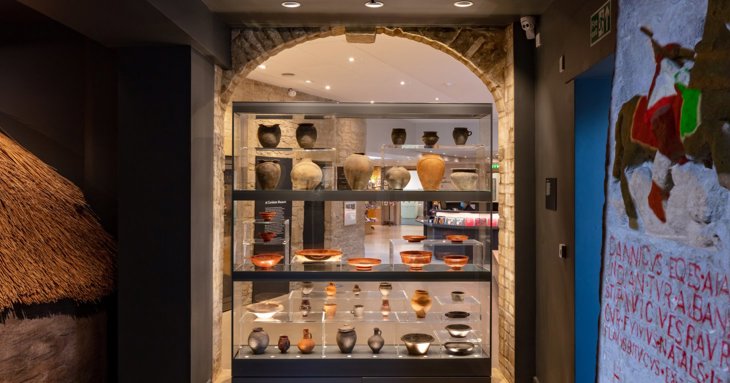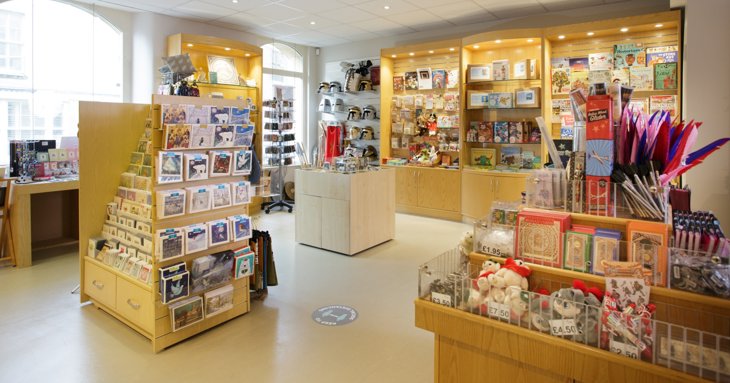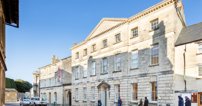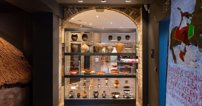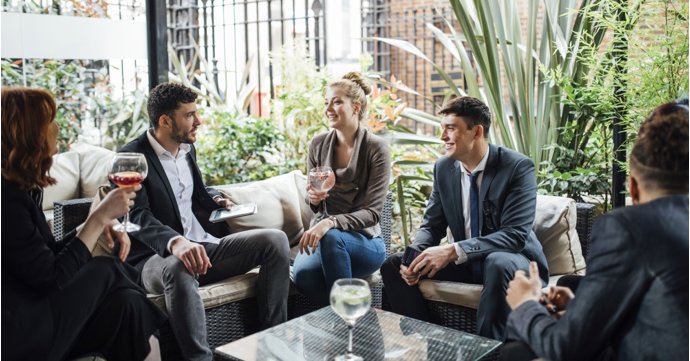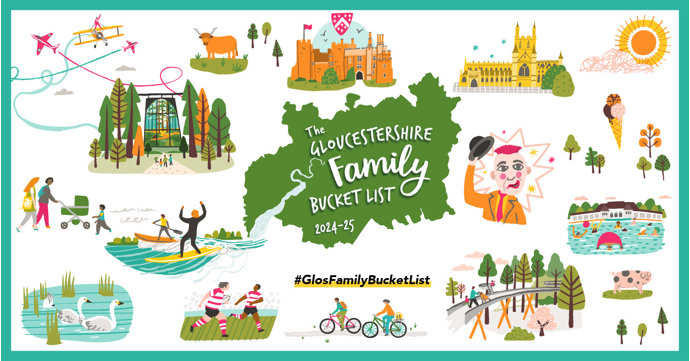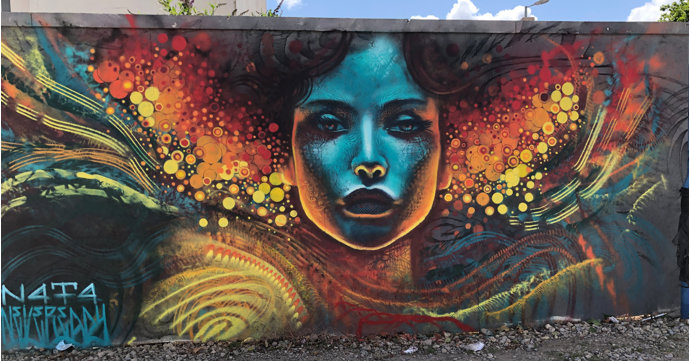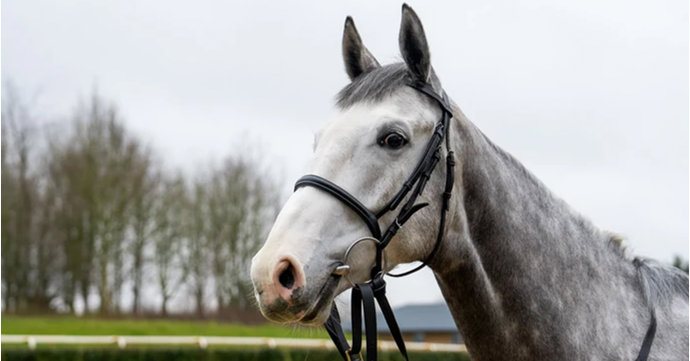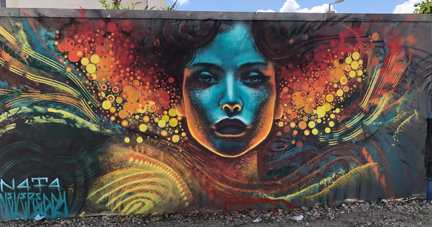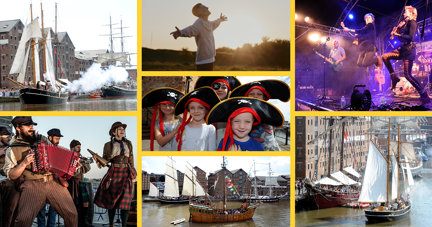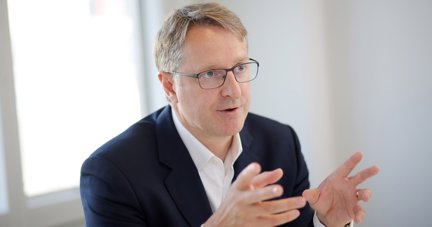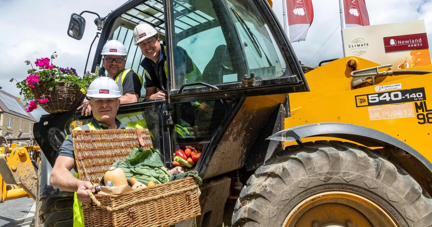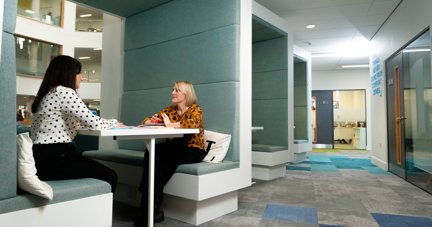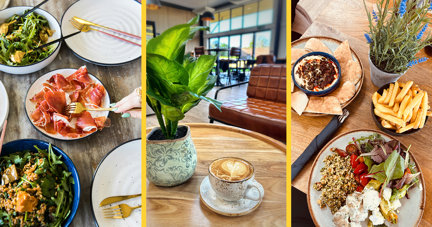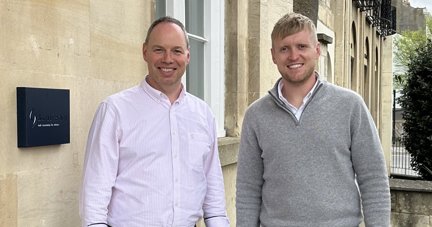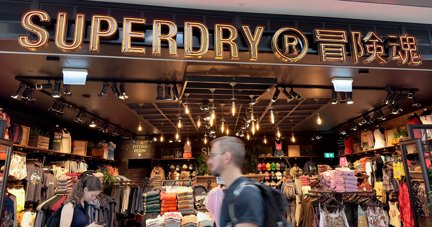Offering the chance to step back in time to the Roman town of Corinium – now better known as Cirencester – Corinium Museum takes visitors on a journey through time, charting the development of the prehistoric landscape of the Cotswolds to the modern day.
SoGlos spoke to the museum’s new director, Katharine Walker, to find out what being the head of the interactive gallery and museum is like – and what we can look forward to in the coming months.
Tell us about the Corinium Museum
Corinium Museum is a fabulous example of what every town museum aspires to be. The building itself is great, an oasis in the middle of Cirencester. As you enter the front doors, you see the fabulous hare mosaic, with the new prehistory galleries to your right. You can then meander round, past a reconstructed long cairn and a roundhouse, before finding yourself amidst Roman archaeology from floor to ceiling. It’s a really special place to visit and take your time: absorbing, learning and enjoying.
The first Corinium Museum was built by the 4th Earl Bathurst to house two mosaics discovered in the town in 1849. The building, no longer a museum, still stands on Tetbury Road.
The Bathurst Collection was given to the town in 1936, together with the Cripps Collection, to form the second Corinium Museum and the first to be established on the present site.
While its USP is its Roman collections which are of international significance, it covers some really important archaeology from all periods, for the whole of the Cotswolds.
What made you want to work at the Corinium Museum?
In December 2020, our brilliant new prehistory galleries were opened thanks to the hard work of my predecessor, Amanda Hart, and the team. If you haven’t visited, do – you won’t be disappointed.
I became interested in this redevelopment project having listened to Amanda’s podcast interview with the Prehistory Guys, good friends of mine. I then came to the Museum to meet with them when they brought a tour group to visit. I said, at the time, what a great place it would be to work. Within a few weeks, the post of director had been advertised.
The role brought together my two main interests: museums and archaeology. I had to apply!
What does a typical day look like as director at the Corinium Museum
Every day is different, as it is managing any museum. You never know what’s going to come your way. On the one hand it is strategic with considerable forward planning, but you have to be prepared to roll your sleeves up to ensure everything runs smoothly.
Essentially, my role is to enable and empower the team and to provide them with the tools they need to do their jobs to the best of their abilities. The day might begin with sweeping the galleries at 8.30am if we are a cleaner down, holding one-to-one meetings with staff, budgeting and financial planning, liaising with external partners, updating policies, plans and procedures, writing funding applications, and corresponding with academics and researchers. It also involves representing the museum at external events, so the role is vary varied and that’s what I like best.
Last week I was in Glasgow for the Association of Cultural Enterprises conference and awards ceremony where we were a finalist in the children’s publication category for our Corinium Museum Explorer’s Handbook.
How do you decide what will be displayed in the museum exhibits?
Essentially, we want to provide narratives that give as full an overview as possible of human activity across all periods, in what we know today as the Cotswolds. We choose objects from our collection that will help us to do this in as an accessible way as possible.
We actively collect objects that will enhance these narratives. There is of course a practical element, too. We have to select objects that will best suit the spaces available. It has also got to be about what people want to see, not just what we want to show them. We want them to feel inspired. Some of our objects and in particular the mosaics really do have the ‘wow’ factor.
What’s your favourite artefact at the Corinium Museum and why?
This is a really difficult question as there are so many. As a stone axe specialist, I am particularly fond of the ‘polissoir’ on display in our prehistory galleries. This is a large pebble used for polishing and sharpening stone axe. It really connects us to the people who made and used these tools. A rare, enamelled cockerel figurine found in an infant burial dating to the Roman period during excavations of the former Bridges Garage site is pretty special. I also love the hare mosaic.
The Corinium Museum Highlights guidebook has a cracking selection of some of our favourite things.
Ultimately, what I am interested in is the human stories and experiences behind these things and what the contexts in which they are found can tell us about past societies. Without context, the objects are virtually meaningless. For this reason, the assemblage from Alan Saville’s thorough excavation of the Hazleton North Neolithic long cairn is incredibly important, especially due to the exceptional preservation of the human remains. ~
How can visitors get involved?
Every membership supports the Corinium Museum and helps us to care for the archaeology of the Cotswolds for future generations. As a member your contribution helps to support our successful events and learning programmes and it aids our fundraising campaigns to acquire new objects for display. You also become part of the wider museum family. Memberships also make great gifts for individuals and families.
We have some new corporate membership packages which include free entry, recognition on our website and social media, discount in the shop, a monthly newsletter and much more, too.
Corporate membership is an ideal opportunity for companies to support their community through an amazing institution, to preserve and restore items of historic interest, which can educate and provoke curiosity in people of all ages.
What can people look forward to over the coming year? Is there anything new and exciting to keep an eye out for?
We have a packed programme of events, so keep an eye on our website for what’s on. Opening on 22nd October this year is our big new exhibition, ‘Gladiators: A Cemetery of Secrets’ which comes to us on tour from the founders of the Jorvik Viking Centre. This will be on display for six months and we have some great activities and events alongside this for everyone to get involved in. More information will be available on this soon, so watch this space!
What’s your main aim for the museum in your new role?
My number one aim is to build a sustainable museum: socially, environmentally, and economically, to ensure the preservation of our internationally significant collections for many more years to come. So, please, come and visit and tell all your friends!

In partnership with Corinium Museum | coriniummuseum.org




